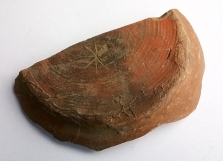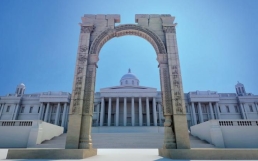
Archaeologists believe they have found the remains of a 16th century cross that was erected in the US by a Spanish conquistador.
Hernando de Soto, who made a fortune from his conquest of the Inca empire and who married into a family that was close to Spain's Queen, is believed to have erected the cross in a village of the Casqui tribe in Arkansas.
Archaeologists found the ancient fragments of wood at the Cross County site that is believed to be the mound where de Soto placed the cross with the help of Casqui people who he had baptised.
Archaeologists have been looking for the cross since the 1960s, according to the Arkansas Archeological Survey which reported the find. Decades ago they were called to the Parkin Archeological State Park, where the fragments were found, to tidy up some holes left by treasure hunters, and found a large wooden post.
A sample from the post was taken and stored, and it was carbon-dated as long ago as 1992.
In 2015, the Elfrieda Frank Foundation agreed to fund a new search for the remains of the cross. During the dig last week, archaeologists rediscovered the wooden post along with fragments from Native American pots. The cypress wood, which shows signs of having been burned, is to be sent to a tree ring expert and if it is found to date from 1541 it will be confirmed as the Cross of de Soto.
Dr Jeffrey Mitchem, the Parkin site archaeologist for the Arkansas Archeological Survey, said: "This is a very exciting development. The combination of the wooden post segment and the undisturbed large post hole both point to a strong presumption that this is de Soto's cross from 1541. Hopefully the dating studies, especially the tree rings, will confirm it."

















